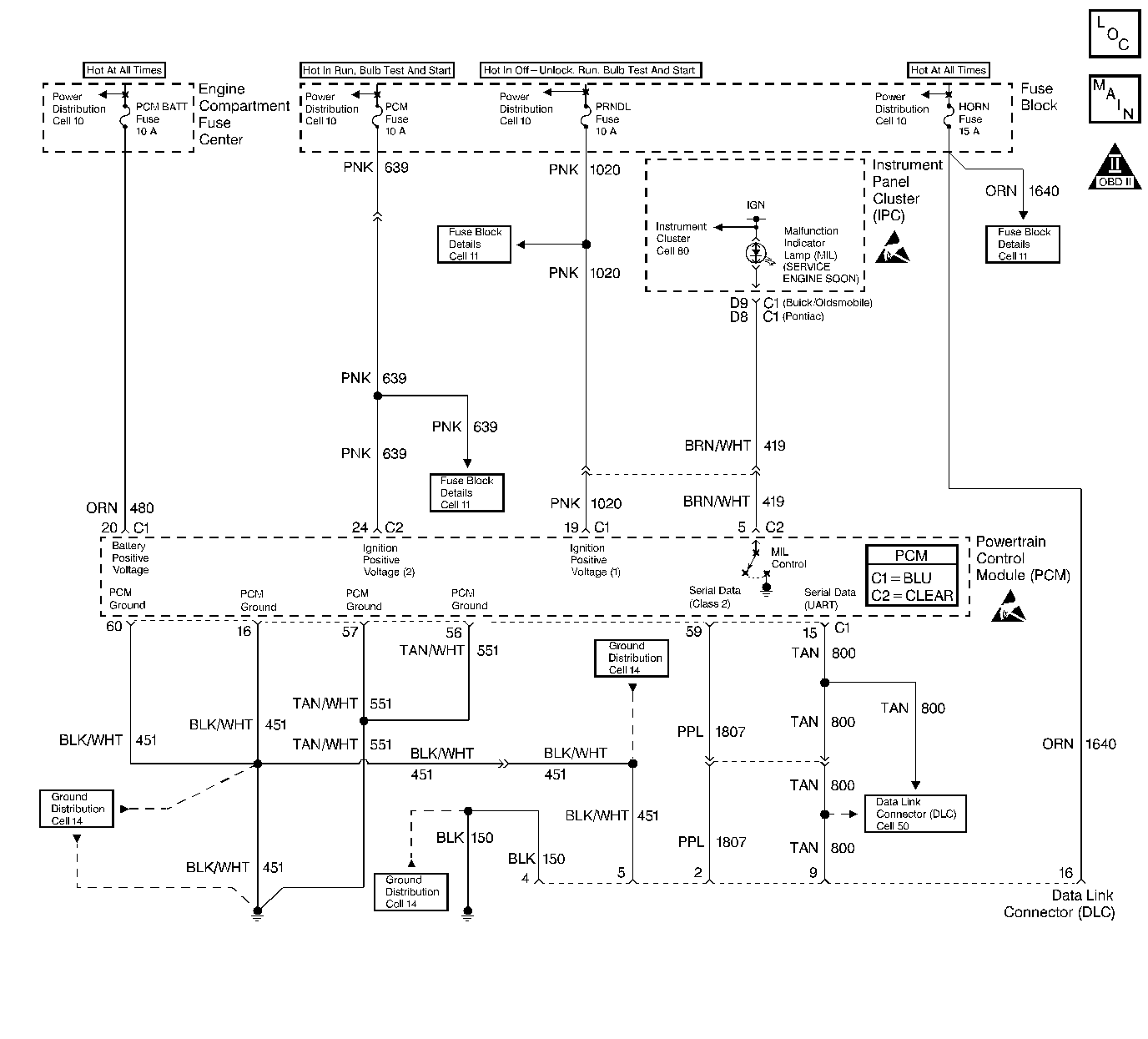
Circuit Description
The Powertrain OBD system check is an organized approach to identifying a problem created by an electronic engine control system malfunction. The Powertrain OBD system check must be the starting point for any driveability complaint diagnosis. The Powertrain OBD system check directs the service technician to the next logical step in diagnosing a complaint. Do not perform this check if no driveability complaint exists. Understanding the table and using it correctly will reduce diagnostic time and prevent the replacement of good parts.
Important: This vehicle is equipped with a Powertrain Control Module (PCM) utilizing an Electrically Erasable Programmable Read Only Memory (EEPROM). When diagnostics call for replacement of the PCM, the new PCM must be programmed.
Refer to Powertrain Control Module Replacement/Programming .
Step | Action | Value(s) | Yes | No |
|---|---|---|---|---|
1 |
Is the MIL ON? | -- | ||
2 |
Does the scan tool display PCM data? | -- | ||
3 | Attempt to start the engine. Did the engine start and continue to run? | -- | ||
4 | Display DTC Info Last Tst Fail. If any DTCs are stored as last test failed, save the freeze frame and fail record information using the Capture Info feature on the scan tool. Are any DTCs indicated as last test failed? | -- | Go to the applicable DTCs | |
5 | Display DTC Fail Records with the scan tool. If any DTC Fail Records are stored, save the freeze frame and fail record information using the Capture Info feature on the scan tool. Are any Fail Records stored? | -- | Go to applicable DTC table | |
6 | Compare PCM data values displayed on the scan tool to the typical engine scan data values. Are the displayed values normal or close to the typical values? | -- | System OK | Go to indicated Component System Checks |
